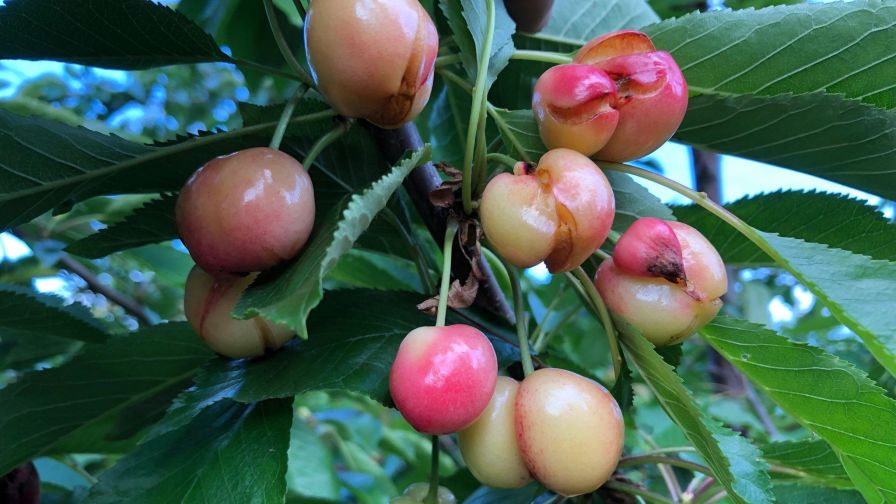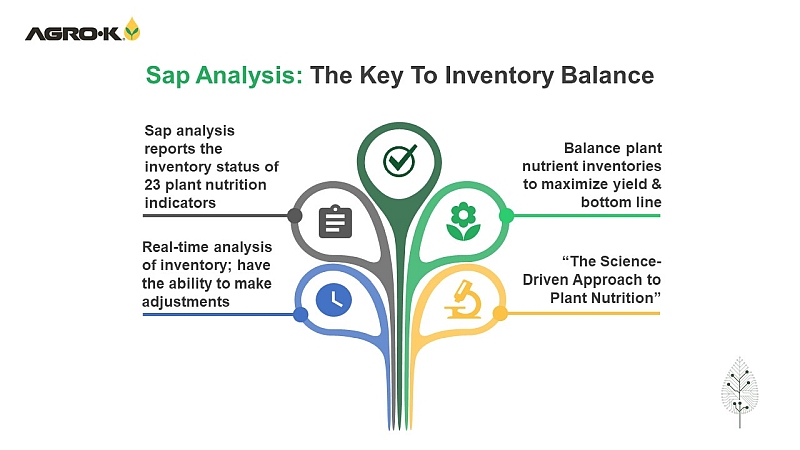California Cherries Hammered by Unseasonable Storms

These ‘Coral’ variety cherries being farmed in the Fresno, CA, area sucked up too much of the Golden State’s unseasonable rains this week. Besides ‘Coral,’ many of the early California varieties were hit hard, including ‘Brooks’ and ‘Tulare.’
The “atmospheric river” that kept the storms flowing through California all winter long is extending through May, much to the consternation of the state’s cherry growers, who are seeing huge losses on early varieties. As the cherries near harvest, they are easily damaged by rainwater, which seeps under the skin, swelling the fruit and causing it to split.
“The early-season varieties were just getting going (into peak harvest), the ‘Brooks’ and ‘Corals’ especially, and they’ve just been devastated,” Tom Valenzuela, Sales Director of Sunriver Sales in Visalia, CA, said Tuesday afternoon. “And it looks like more rain later today or tonight.”
More rain at this point — nearly two months past the normal end of the rainy season — is really going to hurt. The state has two to five times more precipitation than is normal for this point in May, according to the National Weather Service. A weekend storm broke a 130-year-old tally for May rainfall in downtown Sacramento. By Sunday — with 12 days left in the month and more rain in the forecast — the downtown area had received 3.28 inches of rain, surpassing the previous monthly record set in 1889. The average rainfall for May in downtown Sacramento is 0.76 inches.
Officials at the California Cherry Board could not be reached for comment, but there’s no doubt the general feeling is that a few million boxes worth of cherries have been lost, with the worst affected being early season varieties and a large portion of the ‘Bing’ crop. There is some hope that some of the later season cherries can still be salvaged. Don Goforth, Sales Director of Family Tree Farms in Reedley, estimated that at least half of the state’s early cherries grown south of Madera have been lost.
Goforth said his company was hit hard by hail and heavy rain. Some of their blocks are so bad they will have to abandon them completely.
“It’s very expensive to both pick and pack cherries,” he said. “If you can’t break even, why bother?”
Though they were hit hard, they were about halfway through cherry harvest already. Other growers weren’t so lucky, with losses in the 50% to 70% range common.
“Some guys are just walking away,” he said.
Because of the high cost of bringing the fruit to market, most growers will simply declare a loss and collect the insurance. Most growers do have insurance, said Goforth, but not all.
What’s frustrating is that because of the winter rains, the reservoirs and soil profiles were full of water and it appeared the state’s cherry growers were set, said Goforth.
“All the promotions were in place, and we were looking for a nice, big, marketable crop,” he said. “The past seven days have taken care of that.”
Goforth said that Family Tree Farms also grows a large amount of other stone fruit, including peaches and nectarines. These were also affected — especially by hail, though damage was hit and miss— but to a lesser extent than cherries.
“Our other stone fruit was also affected by hail and we are expecting to see some spotting resulting in a little bit of damage,” he said. “However, it is not too severe, and we are still quite hopeful of a good stone fruit crop.”
As for other crops, the story is similar in that there is some limited damage, but nothing compared to the cherry crop. For example, May showers have put a damper across North Coast vineyards, wetting them at an inopportune time when they’re nearly blooming, raising the risk of damaged wine grapes and a smaller 2019 yield for certain varieties.









